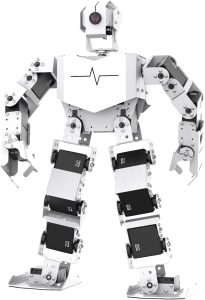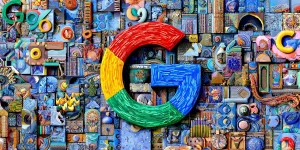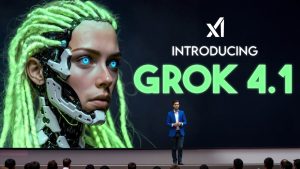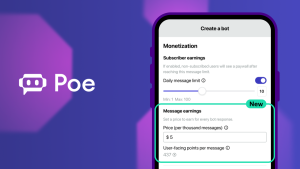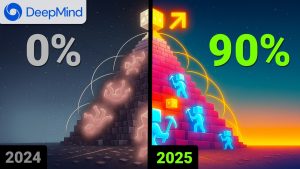AI’s Next Chapter Unveiling the Secrets of GPT 5

In the ever-evolving world of Artificial Intelligence, recent leaks about GPT 5 have sparked significant discussions. Rumors and speculations are swirling around this much-anticipated model from OpenAI. Many wonder if it meets the high expectations set by its predecessors.
But the real story lies beneath the surface as major players in AI strive to overcome current challenges. The race to develop advanced models continues, with OpenAI, Google, and Anthropic at the forefront. Will GPT 5 live up to its promise, or is it a bump in AI’s road?
GPT 5: A Model Under Scrutiny
The whispers around GPT 5, also known as Orion, suggest a less-than-stellar performance. Internally, there’s chatter about it not meeting the expectations of OpenAI’s team. Some insiders claim that the model struggles with coding queries it wasn’t trained on. This has led to some disappointment in the AI community.
As a successor to GPT 4, it was meant to bring groundbreaking advancements. However, current reports imply it’s not ready for release just yet. There have been hints that its debut might be delayed until next year. The shift in release predictions has certainly put a damper on initial excitement.
The Big Players Face Challenges
Reports suggest that AI giants like OpenAI, Google, and Anthropic are facing hurdles in their latest developments. A slowdown in advancements has become evident. Despite hefty investments, returns are not as fruitful as anticipated. This has led to substantial discussions among enthusiasts.
Gary Marcus, a notable figure, critiques the heavy reliance on deep learning. He argues that while it excels in image and speech recognition, it falters in understanding and reasoning. His persistent advocacy for integrating symbolic reasoning with deep learning offers a fresh perspective.
Deep Learning: Hitting a Wall?
Many voices in the AI community echo concerns over deep learning’s limitations. It seems this methodology struggles with transparency and reliability in critical scenarios. The notion that AI, in its current state, lacks the ability to reason effectively is not new, yet it garners renewed attention.
Marcus suggests a blend of deep learning and symbolic reasoning could overcome these drawbacks. His views find varied acceptance, but the ongoing dialogue raises eyebrows. How AI addresses reasoning and understanding will shape its role in future innovations.
Sam Altman, a key player, has publicly countered these narratives. He argues that the perceived ‘wall’ is more an issue of evaluation saturation. The idea is that existing benchmarks are soon to be outdated, as AI continues to evolve beyond current measures.
Benchmarking AI: A Shifting Paradigm
Current evaluation techniques are under scrutiny too. As AI models evolve, so must the benchmarks that measure their capabilities. A reliance on outdated methods doesn’t reflect true progress. For leaders like Altman, this shift is crucial.
OpenAI, in particular, is pursuing advanced benchmarking methods. This approach might reveal untapped potential within models like GPT 5. It’s a race between AI’s rapid progress and our ability to measure it accurately.
The focus on new benchmarks is more than just a technicality. It’s about proving AI’s capability to handle unfamiliar problems with genuine reasoning. Addressing these challenges might revolutionize AI’s real-world applications.
The Neurosymbolic Approach
Marcus’s vision for neurosymbolic AI points to a balanced future. Integrating symbolic reasoning could hold the key to overcoming AI’s current hurdles. While not universally accepted, this approach is gaining traction.
As researchers strive for human-like reasoning, neurosymbolic models might provide the insight needed. This method’s potential to close the gap between AI and genuine cognitive processes is intriguing.
By combining these methodologies, AI might address its reasoning constraints. It might even offer solutions to long-standing issues like lack of transparency. The shift could redefine what we expect from AI.
The Future of AI: Promising or Perilous?
The future of AI hinges on finding balance between innovation and application. There’s a clear divide in opinions on AI’s trajectory. Will models like GPT 5 signify an upward trend, or do they represent a slowdown?
The reality is more complex than a mere dichotomy. While innovation is sometimes slow, it paves the way for major leaps. The visionaries at the helm believe in AI’s transformative potential despite challenges.
OpenAI and others continue pushing boundaries. They’re committed to making AI more dependable and intuitive. This journey is filled with uncertainty but also with promise.
Looking Forward to GPT 5 and Beyond
There’s no doubt that GPT 5 has sparked a wave of speculation. While its current iteration may not meet all expectations, hopes remain high.
As developers work relentlessly, future iterations might surprise skeptics. It’s not just about technology hitting a wall, but overcoming it.
AI and Evaluation Saturation
The idea of evaluation saturation suggests current benchmarks limit progress. As AI pushes these boundaries, new standards will emerge.
There’s ongoing debate about the relevance of saturation in AI advancements. Some argue it’s inevitable as technology matures, others see it as an obstacle to real progress.
AlphaGo: A Lesson in AI Mastery
AlphaGo’s success showed how AI can exceed human capabilities. It’s a testament to the potential of combining deep learning with strategic insights.
Future AI models might use similar approaches to break new ground. Lessons from AlphaGo’s triumph could inform the development of models like GPT 5 or its successors.
AI continues to captivate as it evolves through challenges. The journey is ongoing, with each step bringing new insights. As researchers navigate complexities, the future of AI holds both questions and promising horizons.




